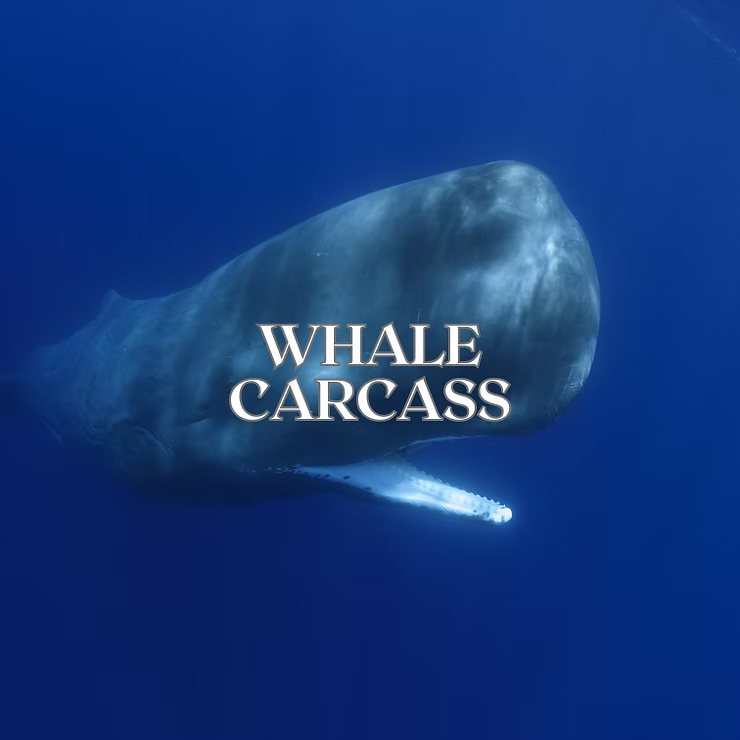Whale Carcasses: Life After Death in the Ocean
A whale carcass may seem like a lifeless body drifting in the sea, but it transforms into one of the most fascinating habitats in the marine world. As these giants decompose, they fuel unique ecosystems that sustain a wide range of organisms. This article explores how whale carcasses create feeding frenzies, temporary shelters, biodiversity hotspots, and play a crucial role in nutrient recycling.
Key Takeaways
- Whale carcasses spark feeding frenzies among scavengers and predators.
- The decomposition process provides nutrients that support marine ecosystems.
- Carcasses act as temporary shelters for smaller creatures seeking refuge.
- Biodiversity is far higher around whale carcasses than in surrounding waters.
- They contribute to nutrient cycling, benefiting long-term ocean health.
The Whale Carcass Habitat
The Decomposition Process
When a whale dies, its body eventually sinks to the seabed, creating a banquet for scavengers. Sharks, hagfish, and crabs feast on the decaying flesh, while bacteria and microorganisms accelerate decomposition. This process releases nutrients into the water, transforming the carcass into a hotspot of life rather than just remains.
Feeding Frenzy
A whale carcass is a buffet for the ocean’s opportunists. Large predators like tiger and great white sharks strip away blubber and muscle, while hagfish, cusk eels, and deep-sea crabs consume softer tissue. Even seabirds descend to scavenge floating remains, creating a chaotic, competitive environment where survival depends on speed and strategy.
Biodiversity Hotspot
Beyond the initial frenzy, carcasses attract unique deep-sea organisms. Bone-eating worms, octopuses, and sleeper sharks establish themselves on the remains, turning the site into a thriving ecosystem. Scientists describe these areas as temporary biodiversity hotspots, where species interactions highlight resilience and resourcefulness in harsh ocean environments.
Unlikely Roommates
Competitive Adaptations
Life around whale carcasses requires ingenuity. Hagfish, for example, release slime to deter competitors, while isopods flatten their bodies to slip into narrow spaces within bones and tissue. These adaptations showcase evolutionary creativity in the fight for survival.
Temporary Shelter
The complex structure of a decomposing whale also serves as shelter. Amphipods, isopods, and small crustaceans find refuge inside cavities, avoiding predators while feeding on leftovers. For many species, the carcass becomes both home and food source until it completely breaks down.
The Circle of Life
Nutrient Recycling
As decomposition progresses, nitrogen, phosphorus, and organic matter are released, fueling phytoplankton growth. These microscopic plants form the foundation of the marine food web, supporting zooplankton, fish, and larger predators. Thus, the whale’s death nourishes life far beyond the carcass itself.
Ecosystem Impact
Whale falls highlight the interconnectedness of ocean life. From scavengers to filter feeders, countless organisms depend on this pulse of nutrients. By recycling organic matter, carcasses maintain productivity and biodiversity, leaving a lasting ecological legacy in the deep sea.
Frequently Asked Questions
How long does decomposition take?
Depending on size, temperature, and scavenger activity, decomposition may take months to years.
Which animals feed on whale carcasses?
Sharks, hagfish, crabs, seabirds, and even bone-eating worms consume different parts of the carcass.
Do carcasses provide shelter?
Yes, many small organisms use bones and tissue cavities as temporary refuges from predators.
How do whale carcasses affect ecosystems?
They create localized biodiversity hotspots, recycle nutrients, and support marine life at multiple food chain levels.

